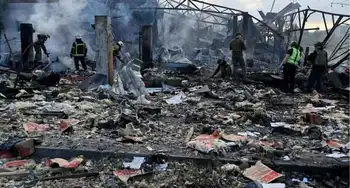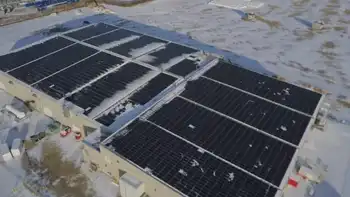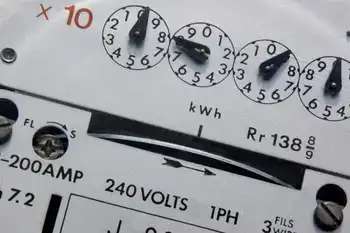Evacuation ordered after grey smoke emitted
By Toronto Star
Substation Relay Protection Training
Our customized live online or in‑person group training can be delivered to your staff at your location.

- Live Online
- 12 hours Instructor-led
- Group Training Available
Smoke rising from the spent fuel storage pool of the plantÂ’s Unit 3 prompted the evacuation, Tokyo Electric Power Co. spokesman Hiroshi Aizawa said. The problem-plagued Unit 3 also alarmed plant officials with a sudden surge of pressure in its reactor core.
Japan's nuclear crisis has exposed huge weaknesses in how the world deals with such disasters, the UN nuclear chief said, urging changes in emergency nuclear responses worldwide.
Yukiya Amano, head of the International Atomic Energy Agency, also told a 35-nation IAEA board meeting that — while the situation at Japan's crippled Fukushima Dai-ichi nuclear site remains serious — “we are starting to see some positive developments.”
He defended his agency's performance since the crisis broke, emphasizing that it is up to individual countries to focus on nuclear safety, with the IAEA only in an advisory role.
Japanese officials had reported some progress in their battle to bring the radiation-leaking Fukushima Dai-ichi plant under control after it was damaged during the massive March 11 earthquake and tsunami that devastated northeast Japan. But the crisis was far from over, with the discovery of more radiation-tainted vegetables and tap water adding to public fears about contaminated food and drink.
The toll of JapanÂ’s triple disaster came into clearer focus after police estimates showed more than 18,000 people died in the quake and tsunami, and the World Bank said rebuilding may cost $235 billion.
The safety of food and water was of particular concern. The government halted shipments of spinach from one area and raw milk from another near the nuclear plant after tests found iodine exceeded safety limits. But the contamination spread to spinach in three other prefectures and to more vegetables — canola and chrysanthemum greens. Tokyo’s tap water, where iodine turned up, now has cesium. Rain and dust are also tainted.
Just recently, the Health Ministry advised Iitate, a village of 6,000 people about 30 kilometres northwest of the Fukushima plant, not to drink tap water due to elevated levels of iodine. Ministry spokesman Takayuki Matsuda said iodine three times the normal level was detected there — about one twenty-sixth of the level of a chest X-ray in one litre of water.
In all cases, the government said the radiation levels were too small to pose an immediate health risk.
But Tsugumi Hasegawa was skeptical as she cared for her 4-year-old daughter at a shelter in a gymnasium crammed with 1,400 people about 80 kilometres from the plant.
“I still have no idea what the numbers they are giving about radiation levels mean. It’s all so confusing,” said Hasegawa, 29, from the small town of Futuba in the shadow of the nuclear complex. “And I wonder if they aren’t playing down the dangers to keep us from panicking. I don’t know who to trust.”
The World Bank said in report that Japan may need five years to rebuild from the catastrophic disasters, which caused up to $235 billion in damage, saying the cost to private insurers will be up to $33 billion and that the government will spend $12 billion on reconstruction in the current national budget and much more later.
All six of the nuclear complex’s reactor units saw trouble after the disasters knocked out cooling systems. In a small advance, the plant’s operator declared Units 5 and 6 — the least troublesome — under control after their nuclear fuel storage pools cooled to safe levels. Progress was made to reconnect two other units to the electric grid and in pumping seawater to cool another reactor and replenish it and a sixth reactor’s storage pools.
But the buildup in pressure inside the vessel holding Unit 3Â’s reactor presented some danger, forcing officials to consider venting. The tactic produced explosions of radioactive gas during the early days of the crisis.
“Even if certain things go smoothly, there would be twists and turns,” Chief Cabinet Secretary Yukio Edano told reporters. “At the moment, we are not so optimistic that there will be a breakthrough.”
Growing concerns about radiation add to the overwhelming chain of disasters Japan has struggled with since the 9.0-magnitude quake. The resulting tsunami ravaged the northeastern coast. All told, police estimates show more than about 18,400 died. More than 15,000 deaths are likely in Miyagi, the prefecture that took the full impact of the wave, said a police spokesman.
“It is very distressing as we recover more bodies day by days,” said Hitoshi Sugawara, the spokesman.
Police in other parts of the disaster area declined to provide estimates, but confirmed about 3,400 deaths. Nationwide, official figures show the disasters killing more than 8,600 people, and leaving more than 13,200 people missing, but those two lists may have some overlap.
The disasters have displaced another 452,000, who are living in shelters.











